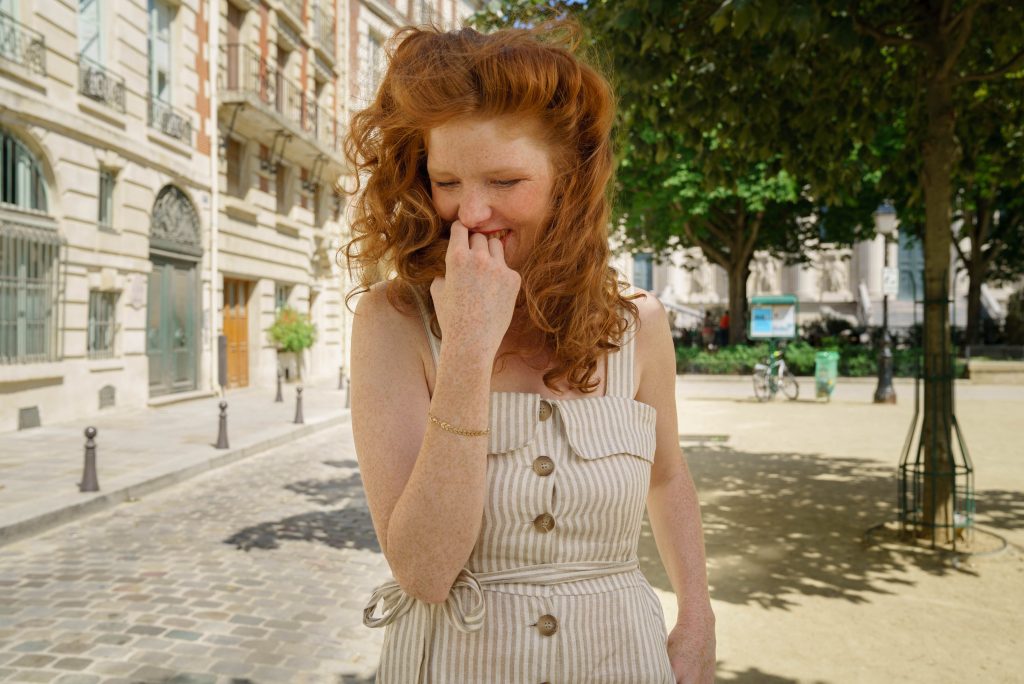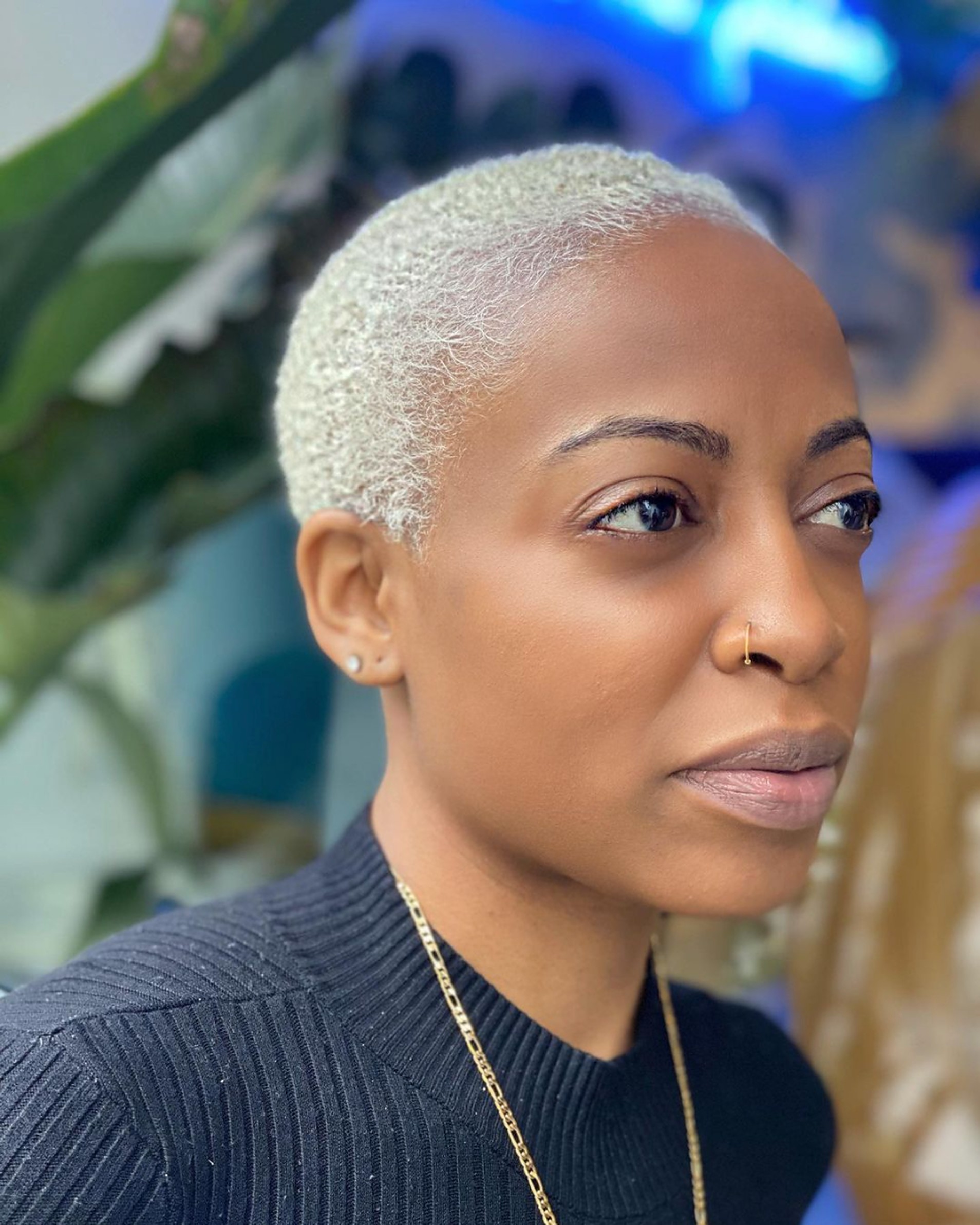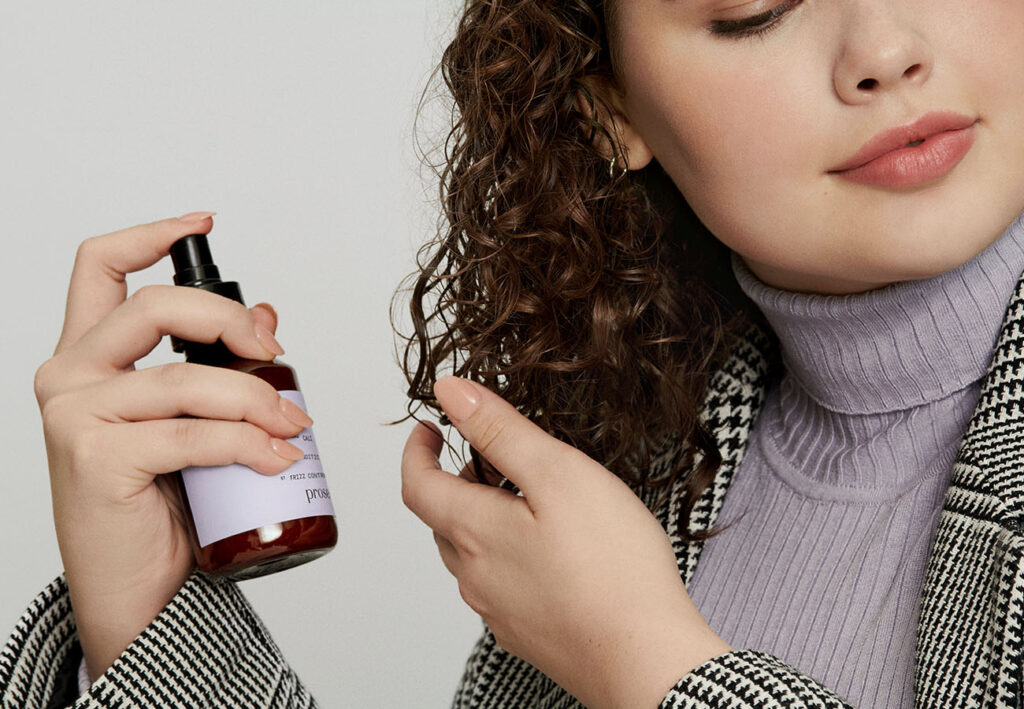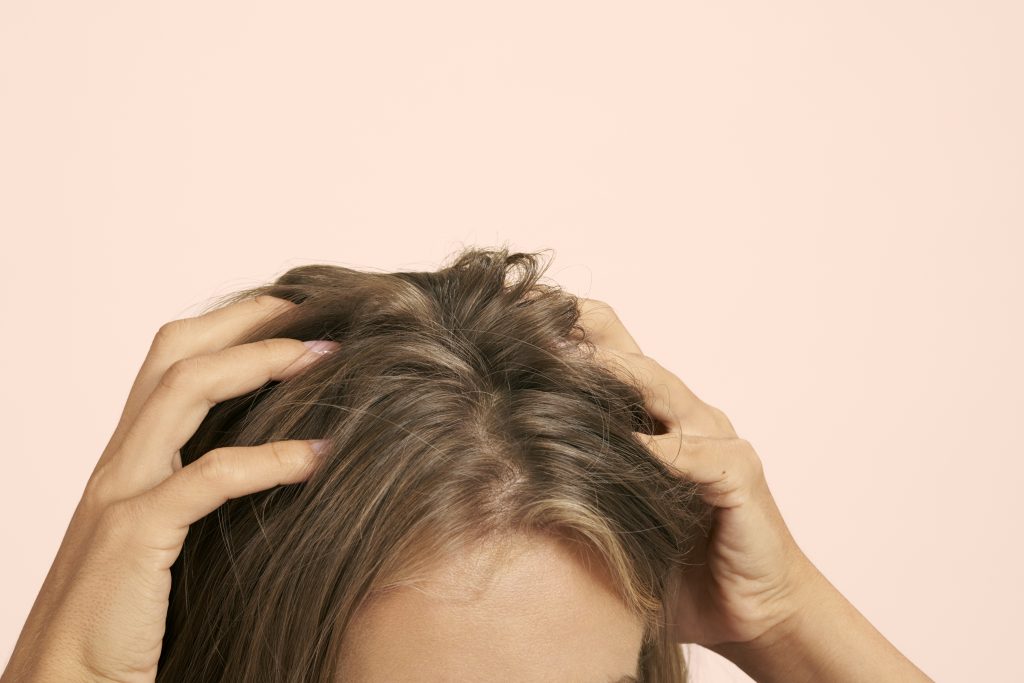What is relaxed hair?
Relaxed hair is chemically straightened to relax the natural curl pattern, whether the texture is wavy, curly, or coily. Unlike natural hair that has the ability to revert to its curly state after a silk press, relaxed hair is always straight and typically still blown out and straightened for a smooth, straight finish.
What is a relaxer?
The terms relaxer and perm are interchangeable. Not to be confused with the style popularized in the ’80s—permanent curls applied to straight hair—this process involves using chemicals to rearrange the structure of natural curly/textured hair into a smoother form. Relaxers disrupt the elliptical shape of curl follicles and reshape them into circular follicles (straightened strands). The process has been used by black and brown women and men since the early 1900s to achieve specific hairstyles.
All relaxers are not created equal. There are three distinct types of relaxers: sodium hydroxide, calcium hydroxide, and ammonium thioglycolate. Sodium hydroxide relaxers are known as lye relaxers and calcium hydroxide as no-lye relaxers. The latter is generally reserved for more sensitive scalps but can be harsher on hair than lye relaxers. Both can be used on curly, coiled or waved locks. Ammonium thioglycolate is a much weaker formula that works best on fine, curly or wavy hair types. Consult a trained stylist to determine which formula is best for your hair type.
Tips for healthy relaxed hair
Schedule a weekly wash
Relaxed hair should be washed at least once a week, especially during warmer months when sun, chlorine, and saltwater can negatively impact chemically treated locs. Invest in a shampoo with hydrating properties to help you clean, maintain and restore hydration. Follow up with high-quality conditioner, specially formulated to promote softness. After all, the key to healthy relaxed hair is moisture and consistency.
Incorporate deep treatments
While you’re adding weekly washes to your calendar, make time for deep treatments as well. Hot oil treatments, deep conditioners, and hair masks can add extra hydration and introduce nourishing ingredients to help hair stay light and flowy. After cleansing hair, apply your treatment section-by-section with special attention to the scalp. The treatment will help you reinvigorate dry strands and restore balance to the scalp. For added benefit, consider indulging in your treatment a few days before you touch-up your relaxer as a protective measure.
Use an oil
Relaxers straighten the hair but weaken the hair shaft. Oils like coconut (that contain a trace of protein) work great for relaxed hair, as well as protein-free oils such as argan oil, shea oil, babassu oil, maracuja oil, sacha inchi oil, alone or combined. Oils work double duty, helping to repair the hair and increase resistance from breakage.
Avoid hot tools
The perk of a relaxer is that it makes you less reliant on hot tools to straighten and style hair. Because the process of relaxing hair weakens follicles, you’ll want to avoid using excessive heat as it can easily cause damage. Instead, opt for alternative smoothing methods such as sleeping with a silk or satin scarf to flatten hair, or using a wrapping foam or leave-in-conditioner to soften and smooth hair. If you must apply heat, make sure to use a heat protectant first.
How often should you relax your hair?
Healthy relaxed hair types require regular touch-ups—reapplications of relaxers to newly grown hair. Without touch-ups, hair is prone to breakage. Ask your stylist how frequently you should get touch-ups. The need can range from two weeks to three months, depending on your hair type.
How long does a relaxer last?
A relaxer is a permanent chemical hair treatment. The only way to remove a relaxer is to grow the hair out or cut the relaxed length. So keep this in mind before you take the plunge.
Can relaxers damage hair?
Having relaxed hair isn’t synonymous with damaged hair. It’s possible to have healthy, thriving hair even if it is chemically treated, however, overprocessing the hair with additional chemicals like hair color, heat styling, and skipping regular trims can lead to damage. We recommend keeping up regular appointments with your stylist and talking through your hair care goals to prevent damage.
Be mindful of your diet
Healthy relaxed hair isn’t just about what happens in the styling chair or your bathroom. Like your natural hair, the key to maintaining strong, healthy tresses has a lot to do with your diet and water intake. B12 vitamins, omega supplements, and other vitamins tailored for healthy hair, skin, and nails can work wonders. Meanwhile, increased water intake will ensure that moisture is flowing toward the scalp at all times.
Did you know that Prose has formulas for chemically treated hair, too? Just select straightening or waving during your consultation and you’ll have your miracle elixir in no time. Get started with your consultation here.





